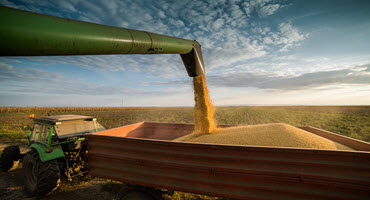Iowa produced its second largest corn crop in 2017
By Diego Flammini
News Reporter
Farms.com
Iowa farmers continue to lead American corn production.
Growers in the Hawkeye State averaged 202 bushels of corn per acre in 2017, according to the U.S. National Agricultural Statistics Service (NASS). That yield is only slightly lower than the state’s 2016 record breaker of 203 bu/ac.
Growers in Marshall County topped state charts with 222.4-bu/ac corn, while five other counties averaged more than 220 bu/ac.
In total, farmers in Iowa produced 2.6 billion bushels of corn in 2017.
Iowa farmers also came close to rewriting the state’s soybean history books last year.
The average soybean yield across Iowa was 56.5 bu/ac, according to NASS. That number is just short of the 2016 average of 60 bu/ac.
And the highest yielding counties recorded individual yields over 60 bu/ac.
Producers in Sioux County topped the state with an average of 65.6 bu/ac. Twelve other counties averaged more than 60 bu/ac.

Producers harvested more than 561 million soybean bushels in 2017.
The increased corn and soybean yields raise the importance of marketing and trade, said Mike Naig, the deputy secretary of the Iowa Department of Agriculture.
The high yield “reminds us that we’ve got a lot to do to focus on making sure we’ve got markets for Iowa products,” he told KCRG yesterday. “So, that’s domestically corn and soybean that are going into the livestock market for feed or (the) renewable fuels sector. But also, making sure we have international markets as well that we can send our products around the world.”